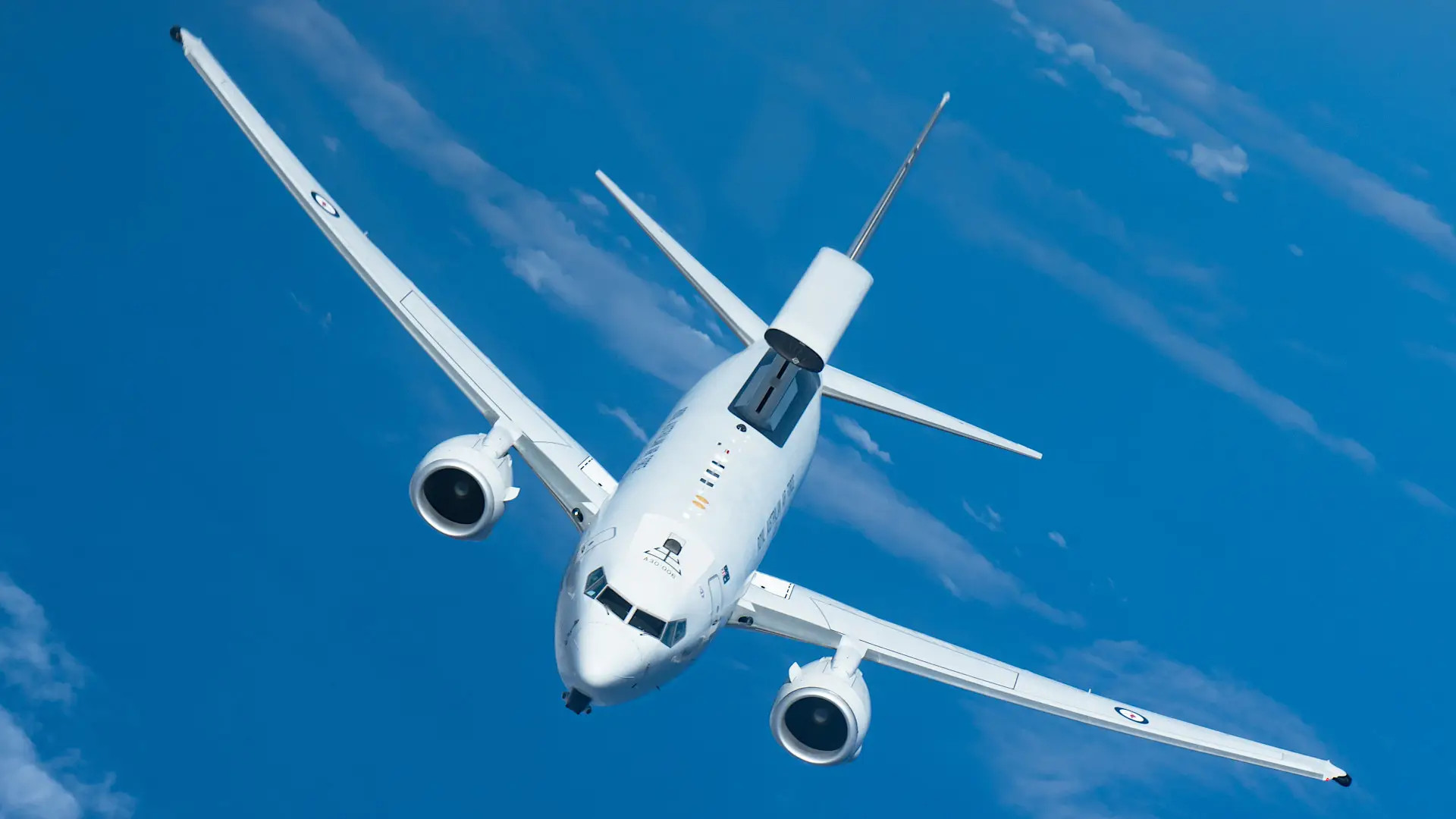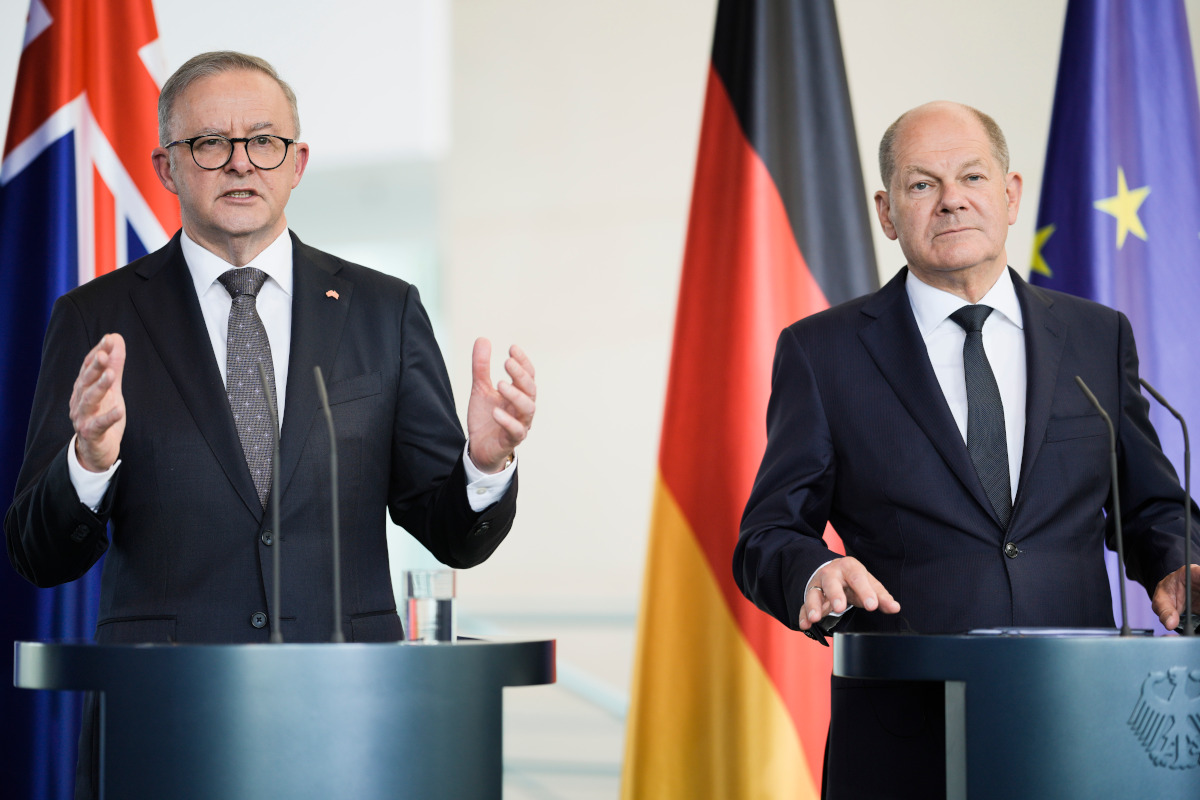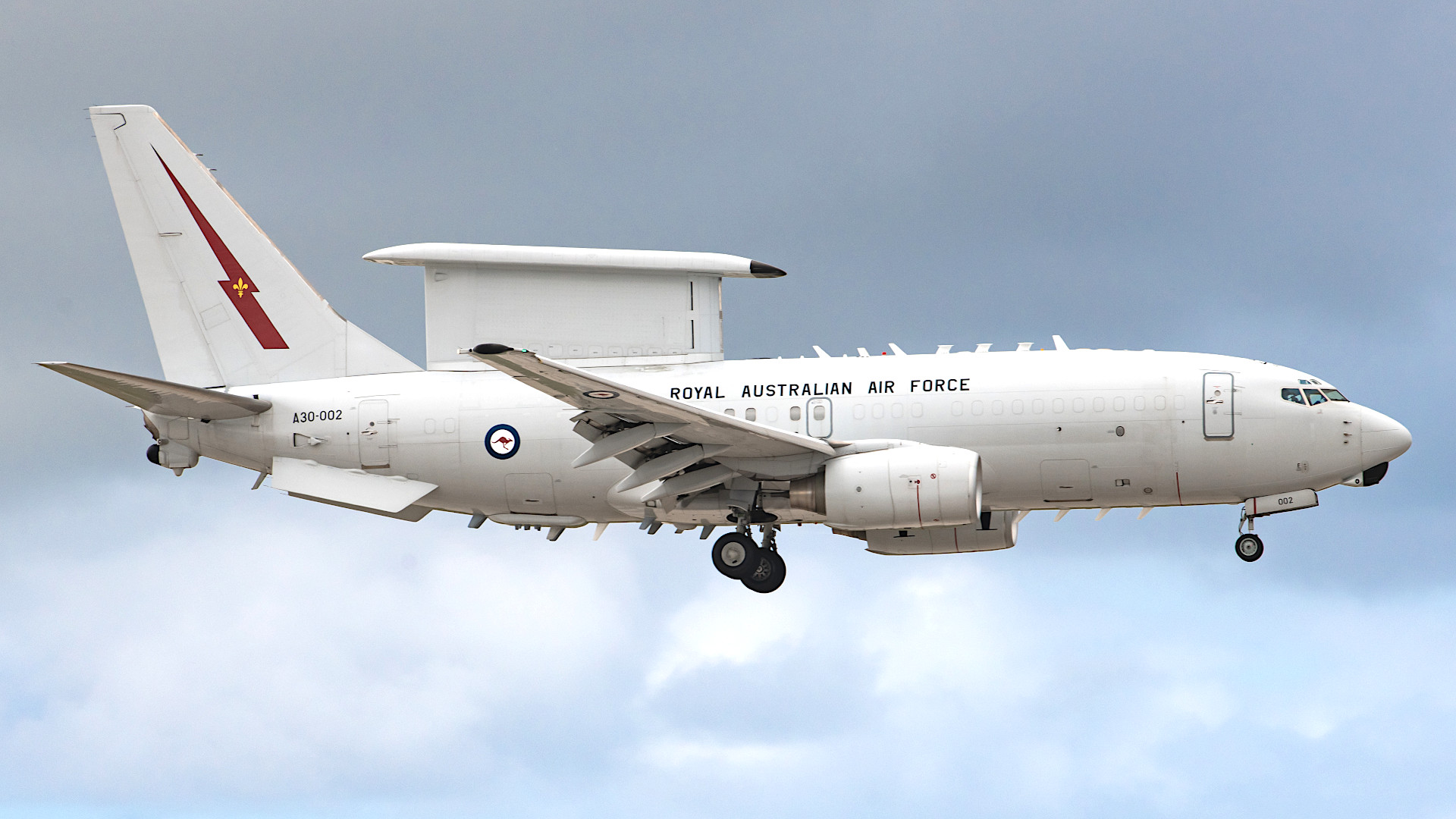The Royal Australian Air Force is set to deploy one of its E-7A Wedgetail airborne early warning and control aircraft to Germany later this year. This appears to be the first operational deployment of an Australian Wedgetail to Europe and the country’s authorities say that aircraft will be used to help keep watch over military and humanitarian supplies entering Ukraine.
The news of the E-7A’s deployment, which will begin in October, was broken today by Australia’s Prime Minister Anthony Albanese in Berlin following talks with German Chancellor Olaf Scholz. Yesterday, Albanese also announced a $1 billion defense deal between the two countries. Germany’s military is also planning to send troops to Australia for the first time later this month, where they will take part in the multi-national Exercise Talisman Sabre.

Speaking to reporters alongside Chancellor Scholz, Albanese further stressed today that “this contribution [of sending an E-7A to Germany] is very significant, both for what it will do but also for what it symbolizes, which is Australia’s commitment to doing what we can to provide the appropriate resources” to support Ukraine. The Australian government has already been providing direct military aid to Ukraine, including shipments of armored vehicles and artillery pieces, as well as training support.
The Australian Prime Minister will be attending the upcoming NATO summit in Vilnius, Lithuania, which starts tomorrow and where Ukraine is expected to be a major topic of discussion. Though Australia is not a member of NATO, it has close relations with the alliance and many of its individual members, including Germany, the United States, and the United Kingdom.

“The deployment of the E-7A Wedgetail as an additional early warning capability will help ensure that vital support flowing to Ukraine by the international community is protected,” Australia’s Deputy Prime Minister, Richard Marles, said in a subsequent press release about the forthcoming E-7A deployment. “Australia is committed to ensuring Ukraine’s sovereignty and territorial integrity prevails against Russia’s assault on the rules-based order.”
“The Australian Defense Force (ADF) will deploy a Royal Australian Air Force E-7A Wedgetail aircraft to Germany for approximately six months from October to help protect a vital gateway of international humanitarian and military assistance to Ukraine,” the release added. “This deployment includes up to 100 crew and support personnel.”
“The deployment of the E-7A Wedgetail will integrate with the efforts of our partners, including the United States, and support the multi-layered protections in place for assistance into Ukraine,” it continued. “ADF personnel or assets will not enter Ukraine throughout this deployment and the aircraft will not be involved in the current conflict in Ukraine. The E-7A will operate outside of Russian, Belarusian, and Ukrainian airspace.”
The E-7A, which is based on the 737-700 Next Generation airliner airframe, “provides a fully integrated, combat-proven, flexible command and control node that delivers multi-domain awareness in the most challenging operational environments,” according to its manufacturer, Boeing. At the core of the E-7A is Northrop Grumman’s Multi-role Electronically Scanned Array (MESA) sensor, which offers simultaneous 360-degree coverage of airborne and maritime threats. The Wedgetail also has robust communications and data-sharing capabilities that allow it to pass on relevant information to other friendly assets in the air, as well as at sea and on the ground. You can read more about the E-7A and its capabilities in detail in this past War Zone feature.

It is not yet clear where the Royal Australian Air Force (RAAF) E-7A will operate from. However, Geilenkirchen Air Base in Germany is home to NATO’s own multi-national unit flying U.S.-made E-3 Sentry Airborne Warning and Control System (AWACS). The Wedgetail is significantly more modern and capable than the Sentry, but both aircraft are designed to perform the same general missions of keeping watch for aerial threats and managing the activities of friendly aircraft.
NATO E-3s, as well as Sentry AWACSs from the U.S. Air Force, have been actively engaged in monitoring the skies over and around Ukraine from within neighboring alliance airspace for months now. An armada of other NATO crewed and uncrewed aircraft have been helping to provide additional intelligence and general situational awareness about the situation since well before Russia launched its all-out invasion in February 2022.

That being said, the specific mention that the Australian E-7A mission will be focused on ensuring military and humanitarian aid makes it safely into Ukraine is interesting. Russian officials routinely threaten to strike Western aid shipments even outside of Ukrainian territory. Though Russia’s forces have not made good on any of those threats, and doing so would risk a direct conflict with NATO, Australia’s announcement indicates that the rhetoric is not being dismissed out of hand.
Inside of Ukraine, Russia has proven to be largely incapable of interdicting the flow of Western weaponry from western Ukraine to the front lines. As we noted when the conflict kicked off, Russia is lacking in standoff surveillance and reconnaissance capabilities, as well as the kill chains needed to strike time sensitive, dynamic targets quickly. The fact that Ukraine has denied Russia air superiority has drastically magnified this deficiency. As such, beyond striking at suspected static stockpiles, Russia has no proven ability to destroy Western aid being moved from the border to the front.
Still, an E-7 would provide the most advanced early warning capability for aerial threats available. This is especially true for low-flying long-range cruise missile and drones, both of which are Russia’s top weapons for striking deep into western Ukraine. The E-7 is the best aircraft in the world to accomplish this challenging surveillance task and its assistance could help in many ways, including in assisting Ukrainian air defenders on spotting and engaging incoming threats.
The RAAF E-7A’s deployment to Europe also comes as the U.S. Air Force is working to retire its entire E-3 fleet and replace a portion of those aircraft with E-7As. U.S. military officials say that future space-based sensor capabilities are another component of the overall Sentry replacement plan.

Separately, NATO is in the process of determining a potential replacement for its own fleet of 14 aging E-3s, which are set to retire in 2035. The E-7A is one possible choice as a successor to NATO Sentry aircraft, with Saab’s GlobalEye constituting another potential option. Having a Wedgetail based in Germany conducting actual operations could give NATO officials a good opportunity to evaluate that aircraft and otherwise refine their future airborne early warning and control requirements.
NATO member Turkey already flies very similar E-7T Peace Eagle aircraft and the Royal Air Force (RAF) in the United Kingdom is also acquiring Wedgetails to fill the gap left by the retirement of its E-3D Sentry aircraft. South Korea is another user of 737-based airborne early warning and control planes. All of these operators benefit from the large international supplier base for the Boeing 737 series, variants of which remain in production.
Regardless, one of Australia’s E-7As is now expected to touch down in Germany in just a few months to actively help ensure the flow of military and other aid to Ukraine continues uninterrupted.
UPDATE 7/11/2023:
Per an official transcript of a joint press conference yesterday involving Australian Prime Minister Anthony Albanese and German Chancellor Olaf Scholz, the latter has confirmed that the Australian E-7A Wedgetail will operate from Ramstein Air Base. This is the U.S. Air Force’s main hub in Germany and is also home to NATO’s Allied Air Command.
Contact the authors: joe@thedrive.com, oliver@thewarzone.com
